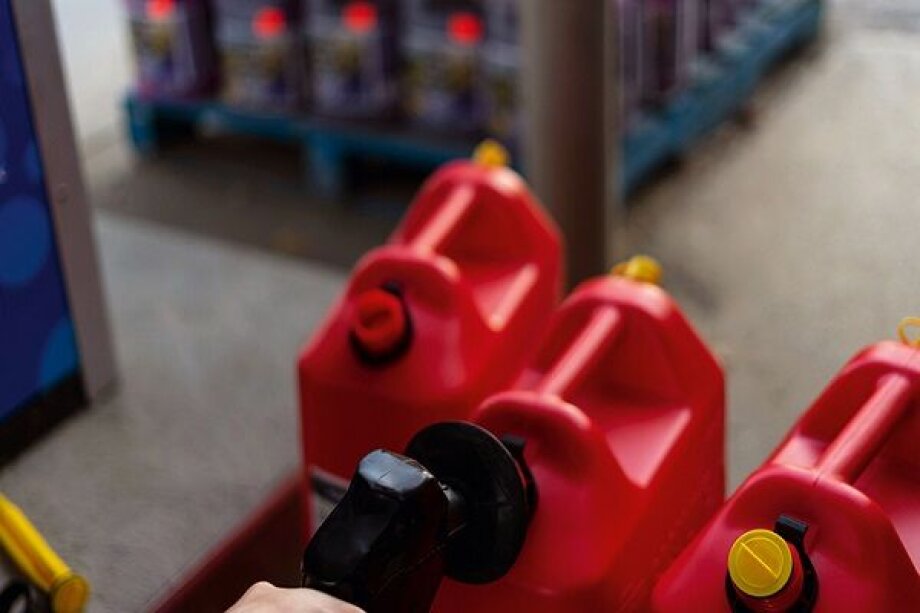WHAT DOES WAR MEAN FOR POLAND?
SANCTIONS AGAINST RUSSIA OVER THE WAR IN UKRAINE HAVE HIT ITS ECONOMY HARD, BUT THE CONSEQUENCES WILL EXTEND BEYOND THE TWO COUNTRIES. BY ANNA RZHEVKINA

SANCTIONS AGAINST RUSSIA OVER THE WAR IN UKRAINE HAVE HIT ITS ECONOMY HARD, BUT THE CONSEQUENCES WILL EXTEND BEYOND THE TWO COUNTRIES. BY ANNA RZHEVKINA

Poland faces the risk of GDP growth slowdown, further inflation, national currency weakening, and outflow of international investors. Poland’s economic growth rate in the fourth quarter increased by 7.3% year-on-year, according to its stats office (GUS) data. This is a figure that may be hard to repeat in the near future. ING Bank economists already cut their GDP growth forecast for 2022 by 1.3 percentage points to 3.2%. “We are dealing with an unprecedented increase in uncertainty and the prospects for economic growth in Poland and Europe have clearly worsened,” they said.
Among key risks, ING names the collapse of foreign trade with Russia and Ukraine, and gloomy consumer moods, resulting in weaker domestic demand. “The scenario of4% GDP dynamics this year seems to be very optimistic and unlikely at the moment,” they conclude.
‘WAR MEANS INFLATION’
Polish złoty (PLN) reacted relatively calmly in the first days of invasion but later recorded heavy losses against the world’s major currencies. In early March, it hit PLN 4.8 mark versus the euro/€, the highest in thirteen years. Frightened by uncertainty, investors seek to move from risker currencies to safe-haven assets, such as the US dollar/$ and Swiss franc/CHF. "There is a serious risk-off in the markets," Bank Pekao economists wrote on Twitter.
Shortly after the PLN’s dramatic fall, the Polish central bank (NBP) had to intervene in the foreign exchange market. The NBP added that złoty’s depreciation was not coherent with the situation in the Polish economy and assured of having adequate currency reserves to counteract the currency’s fluctuations.
Poland’s weak national currency accelerates inflation, which is already among the highest in Europe. “War means inflation. Grocery and fuel prices are rising. In April, we will have inflation at around 10%,” Piotr Arak, director of the Polish Economic Institute (PIE), told private broadcaster RMF FM.
The prices of wheat have already climbed to the highest level in over a decade as markets worry about supply chain disruptions. Russia and Ukraine together supply almost a third of global wheat exports, and other exporters, such as the US, Argentina, and Australia, face low inventories. The prices of bread in Poland may soon double, Monika Piątkowska, president of the Economic Chamber of Trades, Grain Processors & Feed Manufacturers, has warned.
ENERGY AND METAL PRICES JUMP
High commodity prices are among the key concerns as Europe has been struggling with rising energy prices since last year. Even though Poland has been readying itself to cut its dependence on relatively cheap fossil fuels from Russia, for now, it relies on Moscow for about two-thirds of its coal, 65% of its oil, and 55% of its gas, according to Forum Energii think-tank.
In the first days of March, prices for oil have jumped to $100 per barrel. Polish consumers feel the consequences. At Orlen petrol stations in Warsaw, diesel prices have reached PLN 6 per liter. European gas prices hovered around €100 after hitting a €132 milestone on February 24, the first day of the war.
Prices for metals, such as gold, nickel, and palladium also spiked after the European countries agreed to penalize Russia’s central bank and exclude some Russian banks from the international Swift messaging system. Russia’s palladium producer Norilsk Nickel in 2021 accounted for about 40% of the global supply of the metal used for car parts and medical equipment.
Major Polish banks, such as Pekao, mBank, and ING Bank Śląski, suspended transactions in Russian roubles (RUB).
DEMAND AND SUPPLY SHOCK
In 2021, Russia was the seventh-largest recipient of goods exported from Poland and the third-biggest importer to Poland. The shares of Poland's trade with Russia in total exports and imports of goods amount to 2.8% (€8.0 billion) and 5.8% (€16.7 billion) respectively. This is higher compared to Ukraine with 2.2% and 1.1%, respectively, according to a Credit Agricole report.
The war in Ukraine is an example of a simultaneous demand and supply shock. On the one hand, there is a sharp decline in exports to Ukraine and Russia and a slowdown in investments. On the other hand, prices are rising and the economic activity is declining, Credit Agricole analysts explained. The total cut of export from Russia and Ukraine would reduce Polish GDP by 2.5 percentage points, they estimated.
Higher prices of gas stimulate a further increase in fertilizer prices and this accelerates grain prices. Credit Agricole warned that food and non-alcoholic beverage prices can show double-digit growth in 2022.
The uncertainty weighs on Polish companies’ moods that have begun to limit expenses and suspend hiring, according to the Polish Union of Entrepreneurs and Employers (ZPP). Its recent survey showed that as many as 67% of Polish firms expect an economic downturn in the next six months.
At the same time, the NBP attempted to reassure investors, saying that despite the increased uncertainty and rising commodity prices, Polish economic growth would remain strong.